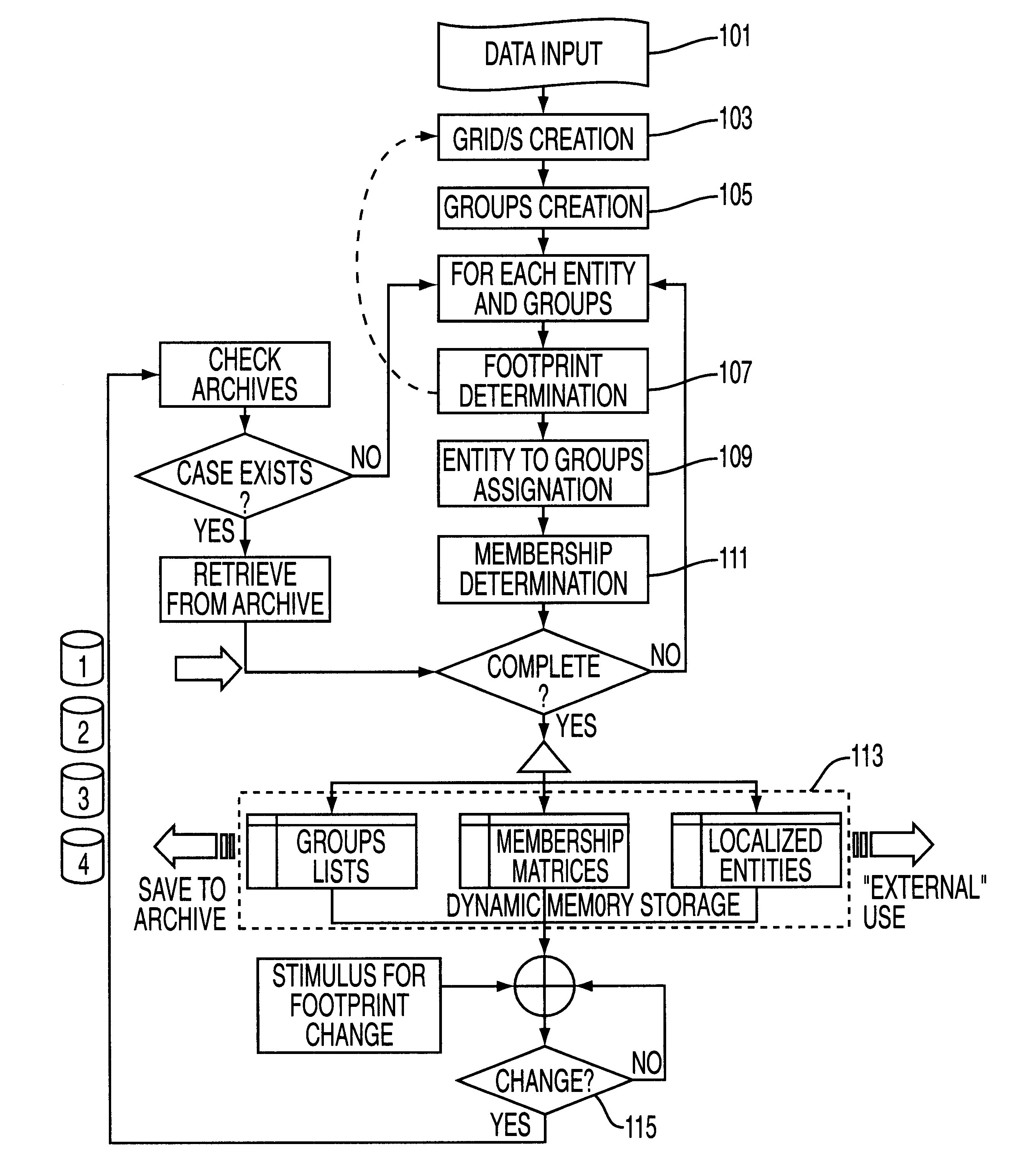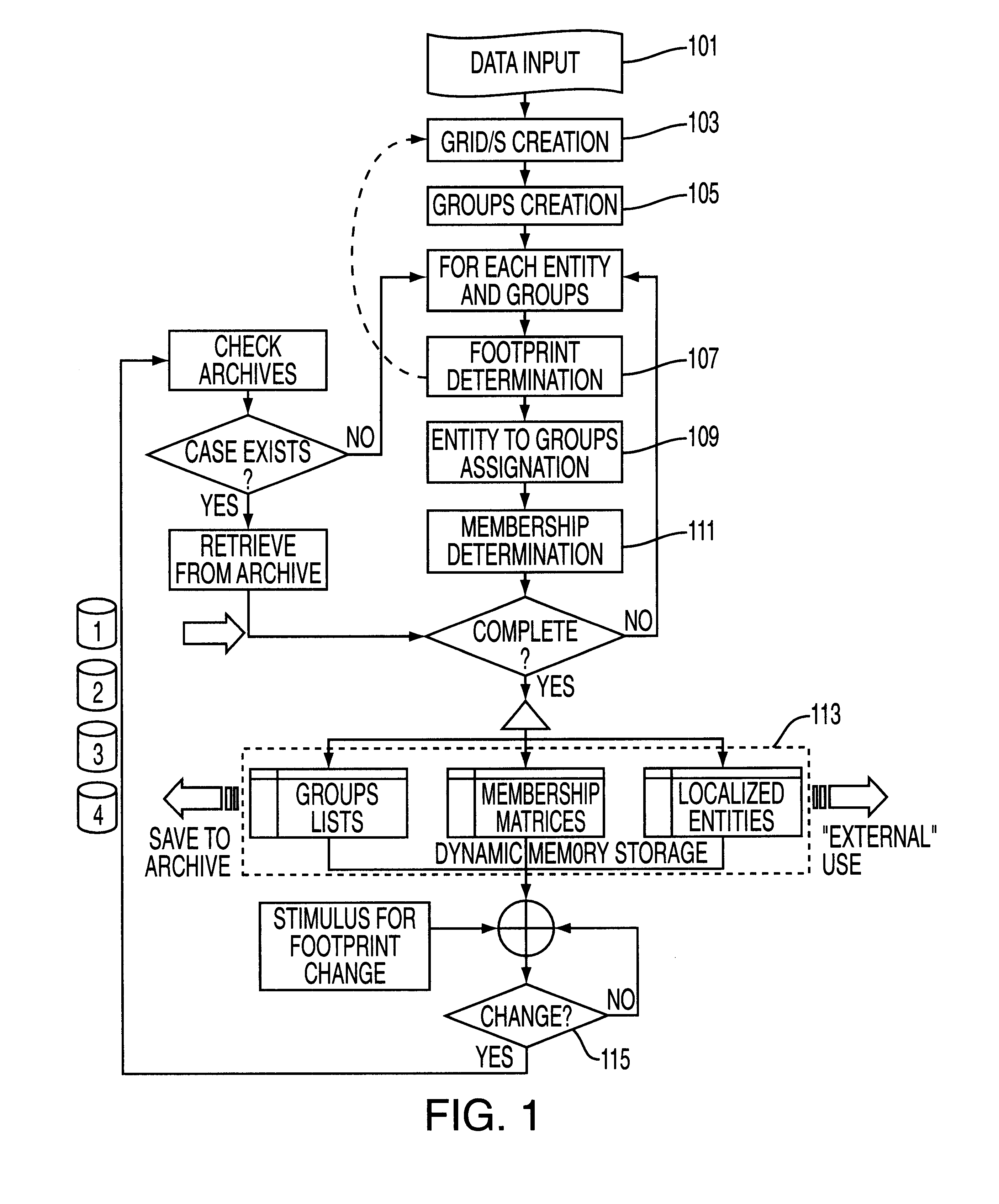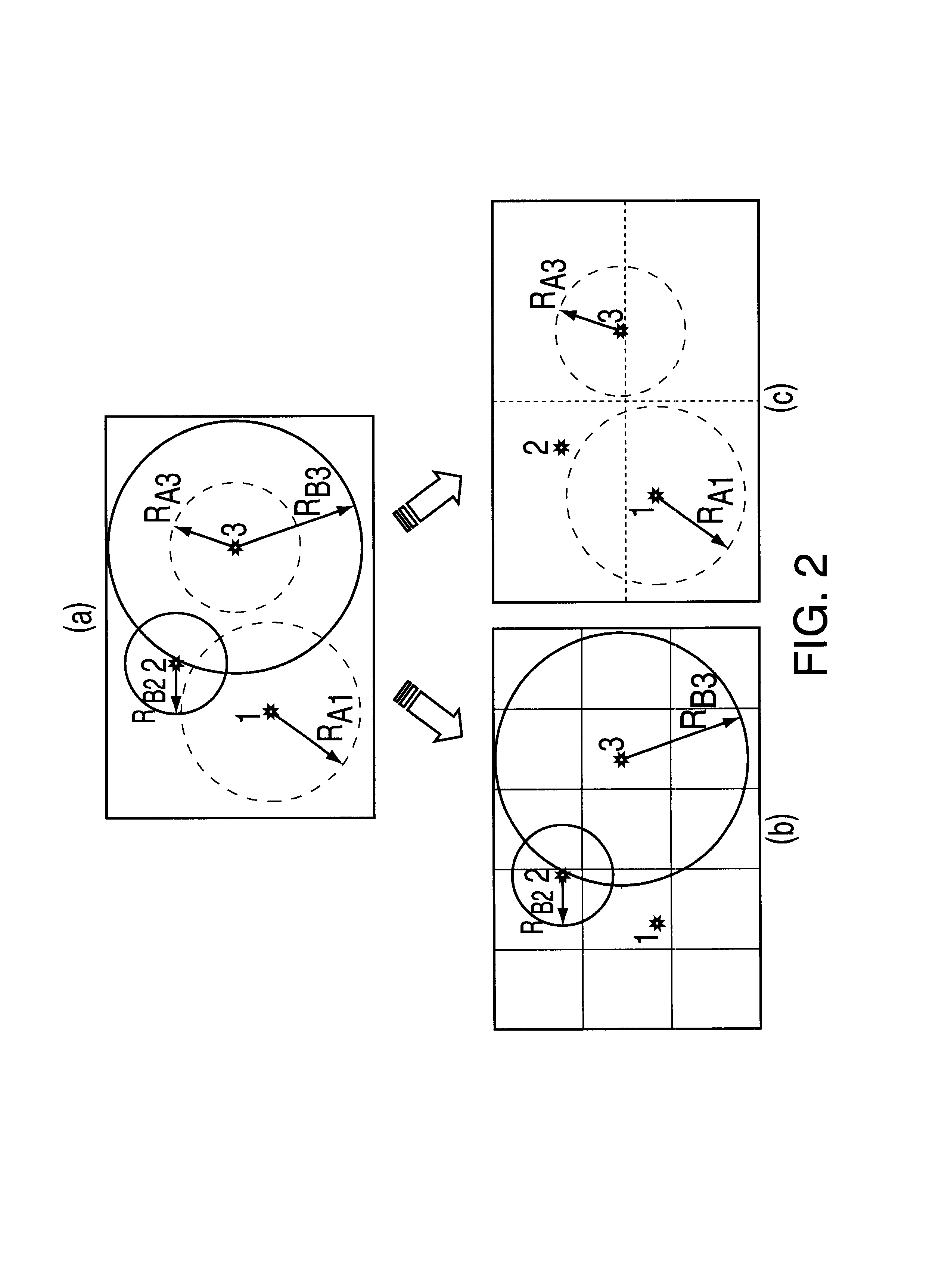Method for dynamically grouping limited range physical entities in a topological space
a topological space and physical entity technology, applied in computer aided design, instruments, data processing applications, etc., can solve the problems of device work, device cost, and large size,
- Summary
- Abstract
- Description
- Claims
- Application Information
AI Technical Summary
Problems solved by technology
Method used
Image
Examples
Embodiment Construction
FIG. 1 illustrates a flow chart that shows one embodiment of the present invention that can be utilized on a data processor or computer. Referring to FIG. 1, the step of data input 101 is necessary to establish the working parameters and requires all the relevant information about the topological space in which the partitioning is to occur. The specific information regarding the footprint of each physical entity or data sensing device is not required at this stage. The required input is at this stage includes:
1) The topological description of the space of distribution in 3 dimensions, unchanging with time.
2) The number of functional domains that exist in the 3 dimensional space.
3) Initial estimates of the functional domain spacing.
4) A scaling factor for each functional domain that the entities are viable. This is used to determine the grid spacing. If this is not provided, the factor may be assumed to be 1.
5) The total number of entities distributed in the space at a given time.
6) ...
PUM
 Login to View More
Login to View More Abstract
Description
Claims
Application Information
 Login to View More
Login to View More - R&D
- Intellectual Property
- Life Sciences
- Materials
- Tech Scout
- Unparalleled Data Quality
- Higher Quality Content
- 60% Fewer Hallucinations
Browse by: Latest US Patents, China's latest patents, Technical Efficacy Thesaurus, Application Domain, Technology Topic, Popular Technical Reports.
© 2025 PatSnap. All rights reserved.Legal|Privacy policy|Modern Slavery Act Transparency Statement|Sitemap|About US| Contact US: help@patsnap.com



